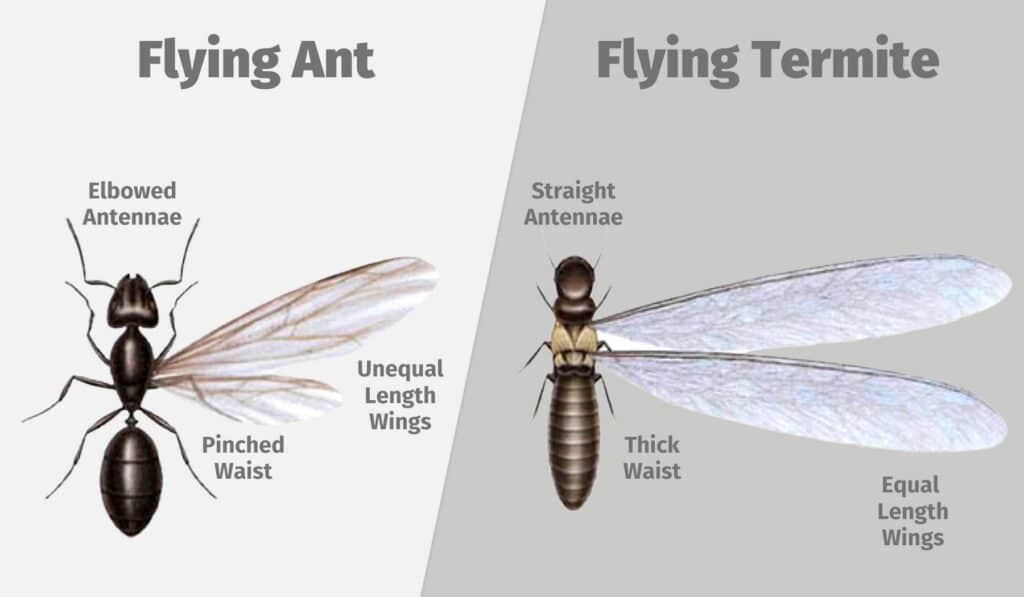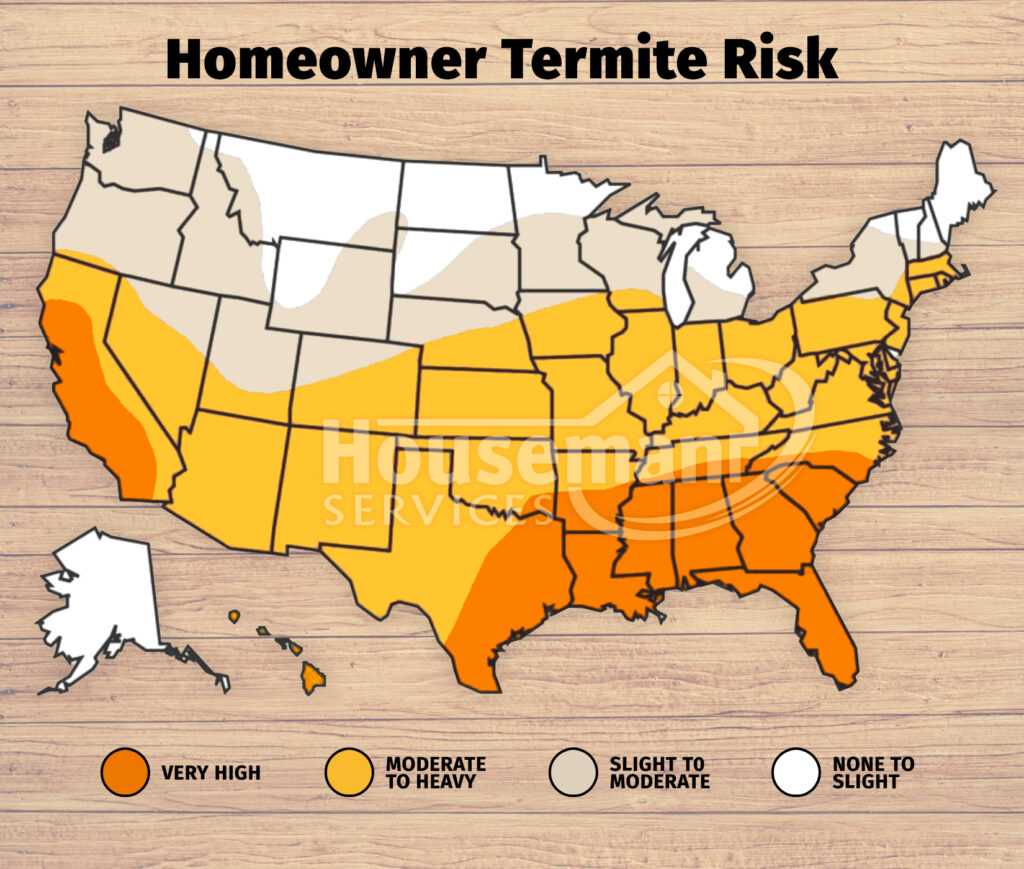Termites cause hundreds of thousands of dollars in damage each year in Gwinnett, Barrow, Walton, and Athens-Clarke counties, but not on our watch.
Termites Don’t Stand a Chance
Proactive Pest Control understands the fundamentals and advanced techniques on how to provide the expert termite control needed to keep homes and families safe.
Termites are extremely active here in Georgia and create havoc on whole neighborhoods. On an acre of land, there could be sixty or seventy colonies of termites. Just one colony contains over a million termites. Termite infestation is practically inevitable unless you are properly prepared. That’s where the pros at Proactive Pest Control comes in.
How To Tell The Difference Between A Termite & Fly Ants
- Flying ants have elbowed antennae. Flying termites have straight antennae.
- Flying ants will have a pinched waist, whereas flying termites will have a solid, thick waist.
- Flying ants have unequal length wings. The front wings will be longer than the rear wings. Flying termites have two pairs of equal length wings.
Check out this in depth blog post about termites and fly ants.

Termite Prevention & Inspection
Every home is different and has different termite risk factors to evaluate. We come in and approach every termite issue or prevention plan with the individual care it deserves. Our highly trained technicians will do a thorough inspection of your property and find any weak points that invite termites into your home. By pinpointing the problem areas, we can help develop a strategy to keep your home protected from these destructive and invasive pests.
The Importance of Regular Preventive Inspections in The Fight for Termite Extermination in Gwinnett, Barrow, Walton, and Athens-Clarke counties
Setting up routine inspections for termites allows us to catch the problem at the first signs of a change rather than after it’s already gotten out of control. Termite removal is much easier at the beginning of a problem so it’s best to catch it early.
Our Combination of Liquid and Bait Treatments is a Winner in This War Against Termites
Proactive experts use a combination approach to termite control. We use baits to catch the termites you have and liquids to kill the rest of the colony.
We protect your home by trenching and treating around your property and home with liquid termiticide. We drill into concrete if needed to make sure we get an adequate amount of coverage with the liquid treatment.
Then we place bait stations around the immediate perimeter of your home to have a second line of defense. The combination of these two is a winning one and will irradicate the colony. To understand how this system works, you need to know a little bit about how termites work.
How Do Termite Colonies Multiply?
Termite colonies are made up of a cast system. The most prolific and biggest cast is made up of worker termites. These workers go throughout the environment searching for food to bring back to the queen so she can continue to reproduce and make new baby termites. Workers are super smart. They can evade traps and baits but, the liquid treatment is not something they can sense. So, the ones that aren’t picked up by the baits take the liquid back to the queen and infect the entire colony.
Learn more about termites and other wood destroying organisms in our Pest ID section.
Our treatment takes advantage of the fact that termites are an incredibly social species to wipe them out and protect your home. Using both types of treatments destroys the colony from the inside out.
Did you know?
- Termites do more damage to buildings in the U.S. than fires, storms, and floods combined. Over $2 billion a year!
- Termites eat non-stop 24 hours a day, 7 days a week, 365 days a year.
- Termites have lived on earth for approximately 250 million years.
- A queen can lay eggs at a rate of about 30,000 eggs per day for some species.
- The total weight of all termites in the world outweighs all the humans in the world.
- Termites eat wood, wallpaper, plastics, and fabric made from plants.
- Subterranean termites nest in soil. Most people don’t even know that they have termites nearby.
- Swarmer termites are often mistaken for ants.

Image source: United States Department of Agriculture.
